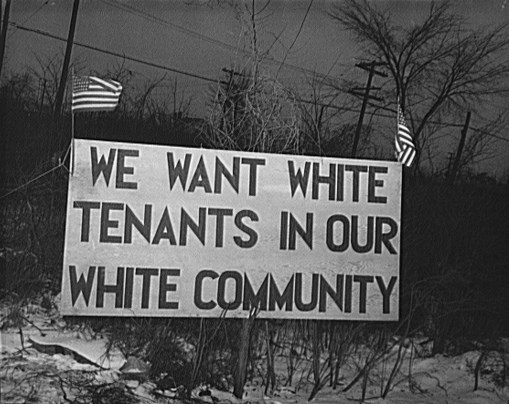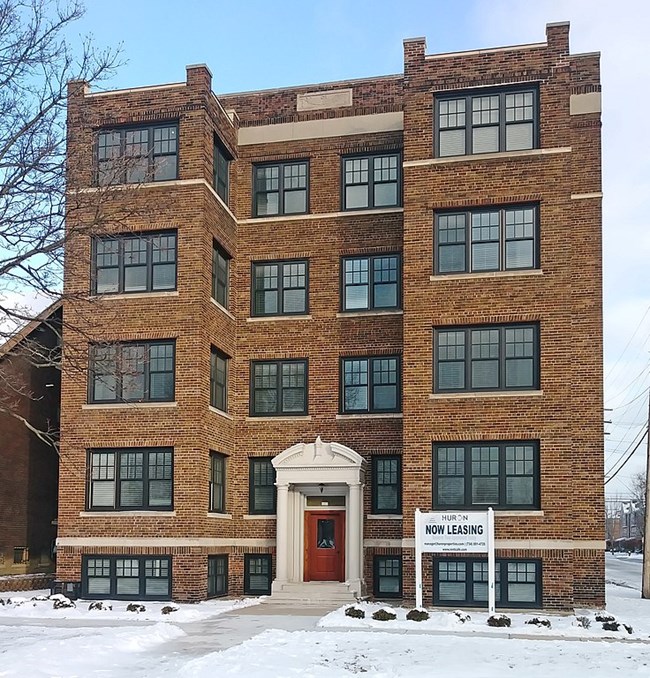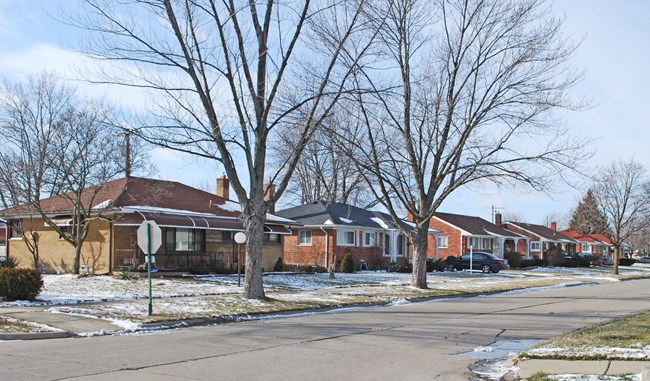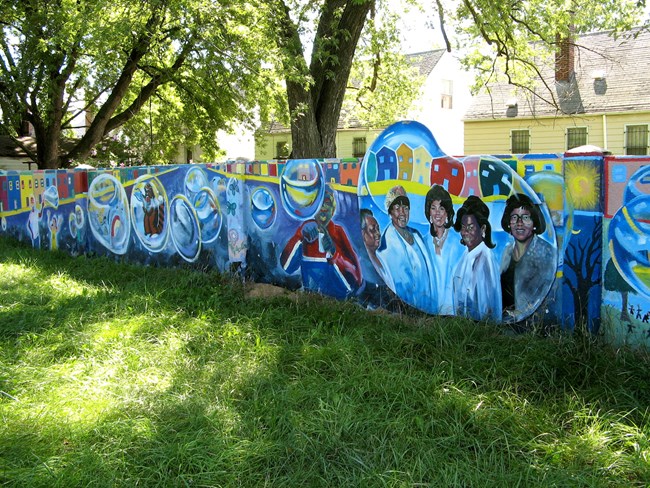Part of a series of articles titled Stories of Detroit .
Previous: Places of Labor History in Detroit
Article

The content for this article was researched and written by Jade Ryerson, an intern with the Cultural Resources Office of Interpretation and Education.
Detroit’s architectural landmarks illustrate the politics of place. Policies like restrictive housing covenants defined the few areas where Blacks could live. These private agreements prohibited the sale or rental of a property to Black people or other minorities, usually for a twenty-year period. Some banks also refused to grant mortgages and loans to prospective Black homeowners.
As Detroit’s African American population continued to grow, segregated neighborhoods became increasingly overcrowded and dilapidated. Beginning in the 1950s, urban renewal and freeway construction worsened the housing shortage by displacing many Black residents from their homes and businesses.
There are lots of stories embodied in Detroit’s rich and varied architectural history. For that reason, this article features historic structures related to Detroit’s history of housing segregation. Originally intended as neighborhoods to confine and hinder African Americans, these places now tell stories of resilience and resistance.

In 1870, a Michigan Supreme Court ruling illegalized the segregation of public schools. Yet an informal system of segregation continued in Detroit. By the mid-1930s, many formerly integrated schools had become segregated again, including Eastern High School. To address white parents’ concerns about overcrowding and desegregation at Eastern, the Detroit Board of Education converted its feeder school, Sidney D. Miller Junior High, into a high school. A school transfer policy allowed white students zoned to Miller to attend Eastern. With Black residents restricted by housing covenants, the policy made Miller the de facto high school for African American students. Sidney D. Miller School was listed in the National Register of Historic Places in 2011.

During the early 1900s, Detroit was the fastest growing city in America. Wartime production and the auto industry attracted Jewish immigrants from Eastern Europe and African Americans from the American South. As the surrounding neighborhood transitioned from mostly Jewish residents, the Great Lakes Manor apartment building provided accessible housing for the growing African American middle-class. Great Lakes Land and Investment, a subsidiary of one of Michigan’s largest African American-owned businesses, bought the building in 1936. Great Lakes Manor was listed in the National Register of Historic Places in 2020.

Featuring homes built during the 1950s, Annapolis Park provided modern suburban housing for hundreds of Black Detroiters. Although Detroit’s African American population doubled to 300,000 people during World War II, discriminatory housing policies limited where Blacks could live. To alleviate the housing shortage, Julius Schwartz and Jack Kellman platted the 354-lot Annapolis Park neighborhood for African American residents. Because many banks denied loans to potential African American buyers, Schwartz and Kellman also opened their mortgage company. The Annapolis Park Historic District was listed in the National Register of Historic Places in 2006.

The Birwood Wall is a physical manifestation of housing segregation in northwest Detroit. In 1941, a white real estate developer sought to build houses for whites next to an African American neighborhood. The Federal Housing Authority refused to guarantee loans for the new development over concerns about racial tensions. To separate Black and white neighbors, developers erected the six-foot tall, one-foot thick concrete wall. It stretched three blocks south from Eight Mile Road, effectively creating a new subdivision. Today, the wall is painted over with colorful murals. In 2016, the National Park Service awarded the Michigan State Historic Preservation Office an Underrepresented Communities Grant. This grant supports the preservation and nomination of sites related to the African American civil rights movement to the National Register of Historic Places.
Discover more Detroit history and culture by visiting the Detroit travel itinerary.
Part of a series of articles titled Stories of Detroit .
Previous: Places of Labor History in Detroit
Last updated: August 30, 2020